I have been getting several text messages from Drew over the past day or so in response to this issue and because he is an expert in this area, I wanted him to write his thoughts on the issue. I would also encourage you to read the essay that he wrote on Accelerate when it was released.
By Drew Crumbaugh
I have been asked by your humble webmeister Eric to flesh out my disgust at this latest mastering travesty that is becoming pervasive with R.E.M.......
First though, I refer you to this: Loudness and Accelerate, An Essay.
Seems like we've been here before. 2008's Accelerate is one of the worst-mastered CD's in my collection, and yet, I think this Fables reissue tops it.
To summarize that writeup linked above, which I wrote (again at Eric's behest) in 2008, when you have a fixed-size container of music, you can't squeeze in more music without the container bursting, or warping
(distorting) the music to fit.
We live in a 16-bit world. The quick-and-dirty layman's Guidebook to Digital Audio, which someone really should sit down and write for Internet audiences, says so.
What does this mean? 16 bits of what, exactly?
Your typical CD is, essentially, an audio container. So is that iTunes music file. So is that MP3 file sat over there on the computer. Just like any container in the world made out of rigid material, the container is what it is and cannot be modified. So you have a fixed size in which to put things. (Nitpicker's corner: Joe Listener doesn't have a high-def setup with SACD/DVD-Audio inline, so we shall ignore them. Not relevant at all to our discussion.)
In digital terms, the CD audio container holds 16 bits of audio. Those bits are, ridiculously simplified, equivalent to the unit lines on the side of a measuring cup. If you have a measuring cup that holds one liter of liquid, let's say the lip of the measuring cup, 1 liter, is also 16 bits. You can't put more in there because there is only room for 16 bits worth of audio.
(Technical discussion: 16 bits translates to usable levels of "volume" i.e. sound amplitude, starting from 0 being the ceiling (loudest) and going to -16 at the quietest. Even more technical, 16 bits indicates the granularity of change levels from one volume unit to the next. Without delving into physics and digital audio theory, 16 bits is the minimum acceptable "size" of container for your average digital music. There are purists who say you can't digitally represent an analog signal accurately, which in the analog
form has no arguable constraints to granularity or volume, with only a 16-bit-wide container, but for our discussion we shall ignore them.)
What happens to the music if we try to put more than 16 bits worth of it into a 16-bit container? It doesn't fit without modification to the music, and modification, always, changes the signal. The signal is the music.
There is an acceptable level of modification because we've lived with it since the early 1980s and the onset of consumer digital audio. But as the years progressed, CDs got louder. "Why" is a discussion for another time, but they just have. And once you reach a certain point, i.e. used up all 16 bits without doing more than simply "turning up the volume knob", you have to modify the music.
Let's say we have a 16-bit-tall pail. In that pail we want to put some grasses, grasses that range from 12 to 26 bits tall. The only way these grasses will fit is by standing them up, like they grow in a garden. So we
gather up our grasses, and put them in the bucket. In order to use our pail, we *absolutely cannot* have any grass peeking over the top. It's just not possible in this world. So once we put the grass in the pail, we have to somehow make it fit - while standing up - with nothing taller than the pail's rim.
There are several ways of doing this. We can get our special gardening tool and shrink the grass, which makes every blade of grass smaller. Because our shrinking tool shrinks everything proportionally, our 26-bit-tall grass loses 10 bits of height and ends up topping out at 16 bits tall. Our 12-bit-tall grass also loses 10 bits of height, and ends up being only 2 bits tall. Everything still proportionally looks the same though, we just need a magnifying glass to see it all.
This is the least intrusive way to make digital audio fit into the 16-bit CD container. If it's too loud to fit - and remember, for our discussion, levels of "loud" equal bits - you, essentially, turn down the volume so the
loudest signal doesn't exceed 16 bits tall. Everything gets quieter, but all proportionally, and it all sounds like the original when all's said and done. The relationship between the smallest blade of grass to the largest
doesn't change. See A Visual Guide below, photo 1, for an original IRS Fables CD waveform from a section of "Driver 8".
What if we don't want to make everything, including the tiny blades of grass, smaller though? What if we just want to make the "overs", the blades of grass that are taller than our 16-bit-tall pail, fit in, while either not touching our smaller blades that already do fit, or (shudder) making the smaller blades taller so they sound louder? Remember, we can't go over the top of our 16-bit-tall pail when we're done.
The next most acceptable way to do this is a method called "limiting". Limiting is essentially what it sounds like: you "limit" the height of the grass to a fixed height. Limiting touches only the blades taller than a
level you specify, and automagically shrinks those blades down under that limit. The longest blades, or our loudest sounds, get shorter (quieter). The blades that were already below our limit are untouched, so they remain their original height (volume). What also changes, though, is the relationship between our shorter blades and our now-limited blades. They aren't as different as they were before, the taller blades are physically forced closer to the shorter blades' levels. While this can compromise the integrity of the blades of grass, or the integrity of and spatial relationship within the music, if done intelligently it can seem transparent to all but the most discerning listener. See photo 2 in A Visual Guide, below, for an example of limiting that same portion of Driver 8 to -6dB amplitude.
The least most acceptable way, or in other words the absolute worst way to make everything fit into our 16-bit container, is a method called "clipping". Like limiting, clipping affects only those blades of grass above
some pre-set limit, but rather than automagically shrinking the blades, instead our clipper takes a set of clippers and just shears off the tops. We actually lose some of our grass, and since it's been clipped off and
composted, it can never be regained. When done to audio, you visibly see (when looking at a waveform representation of the audio) a flat top effect where the upper parts of the signal were clipped off. This is what you see in the image I initially posted.
Clipping often occurs in tandem with another technique called "compression". What compression does is twofold: It stretches out - or magnifies - our smaller blades of grass, making them taller. At the same time, it reduces our taller blades, since again they can't end up taller than 16 bits. So we have the quieter getting louder, and the louder getting quieter. Our proportional relationship between the shorter blades and the taller blades disappears - they end up looking pretty damn similar. Our quiet pieces are now almost as loud as our loudest pieces, and you begin to fail to discern the difference between the two.
Most modern mastering uses the compression+limiting method, making the quiet bits louder and shrinking down the loudest bits, so you have an overall samey-samey volume across the board. See image 3 in A Visual Guide, below, for a portion of Driver 8 compressed and limited by 9dB.
With this Fables reissue, the mastering engineer used the compression+clipping method. That person raised the overall volume - within our 16-bit CD - by turning up the volume knob and taking scissors to the
overs. What does this mean to you? Simply put, you actually *hear* this clipping. The crackling you hear on some of the drum hits, the shearing you occasionally hear (and you know shearing when you hear it, I cannot think of another way to describe it) when Stipe really belts it out on some of these tracks, is the brain perceiving that there's stuff missing. What's missing is the audio that was lopped off by the clipper. Your brain turns that flat line into static, into crackling. It doesn't know what to do with stuff that should be there but isn't. See image 4 in A Visual Guide, below, for that same portion of Driver 8 compressed by 9dB and the overs clipped as they attempted to exceed the 0dB limit.
Clipping, by the way, isn't always intentional. Without getting overly technical, audio engineers aren't limited to 16-bit containers like you and I are. When working on a digital audio workstation, with all the fancy tools
at their disposal to wring the most out of those 25-year-old tapes, they simply use bigger containers. With a bigger container, usually 24 or 32 bits wide, you have more room to work in, and when you're done with your work, you can - ridiculously oversimplified - magically change the size of your container down to 16 bits. If you're not careful though, the actual shrinking-of-the-container will clip your audio contained within, because simultaneous with the container shrinking, the razor-sharp lid scythes past like a knife as it seals the 16-bit-tall container, physically cutting off everything that breaches that 16-bit ceiling. If you've not prepared your audio for the razor-sharp lid, your audio will get destroyed as the container shrinks from 32 bits to 16 bits. See image 5 in A Visual Guide, below, for that same portion of Driver 8 amplified by 9db in a larger container, and then forcibly clipped with the container-shrinking-and-knifeblade-lid result.
So maybe we shouldn't be so quick to say the engineer intentionally clipped the audio along with compressing it. They could simply have been stupid and forgot to prepare for the bit depth change from 32 to 16 bits.
Regardless of how it happened, it's absolutely NOT ACCEPTABLE to have clipping unless it's an artistic intent (and yes, there are some that do this intentionally for the distorted effect. I have no idea why.). There is
NO REASON whatsoever a properly-mastered CD (or MP3, or iTunes file, or whatever) should clip. Clipping is completely avoidable, every time. I can tolerate, begrudgingly, the modern loud mastering movement as long as it's not oppressive (see the recent Beatles remasters, or Pavement, or the Feelies). I have no tolerance for stupidity or destructive methods however. Do not waste your money on this CD. Let's campaign for a properly-mastered version - or at the very least, a non-clipping product.
-----------
A Visual Guide: (Click on the links to view larger versions of these images).
1) a portion of Driver 8 from an original IRS CD
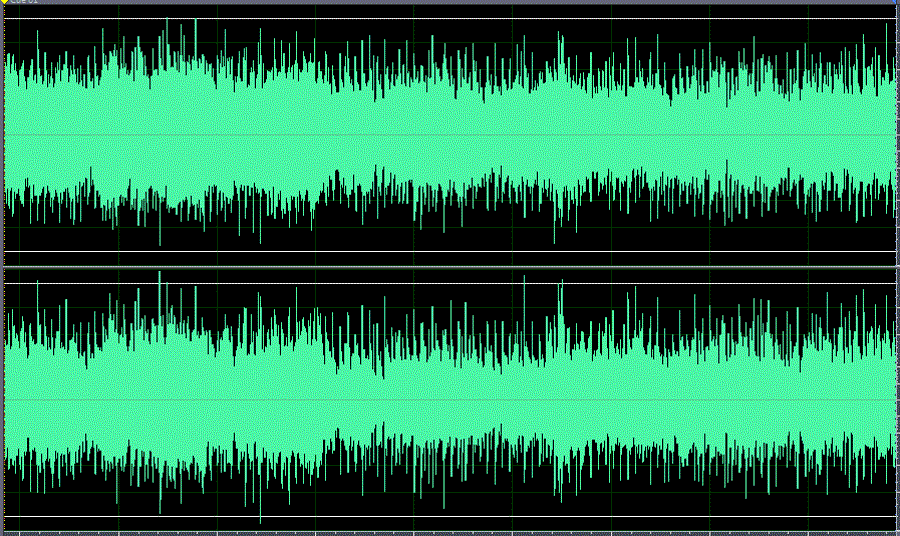
2) that same portion limited at -6dB
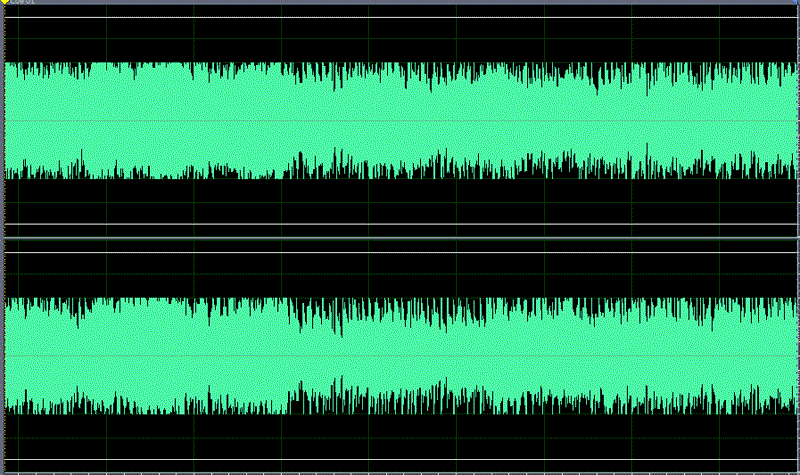
3) that same portion compressed and limited by 9dB (amplification of 9dB and
limiting the overs)
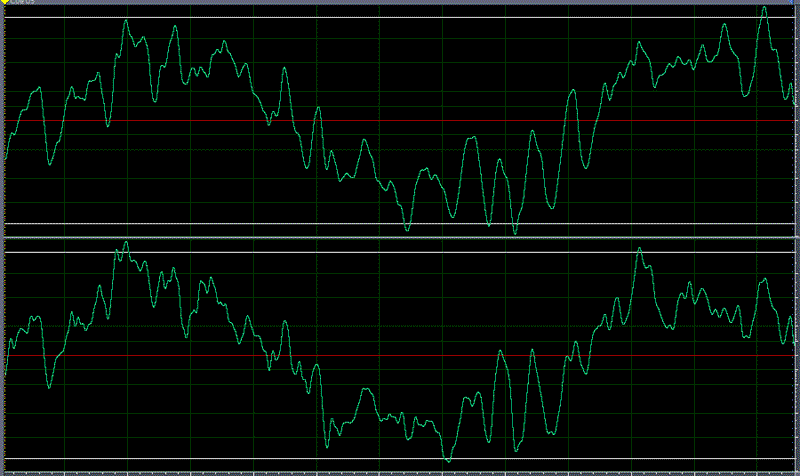
4) that same portion compressed and clipped by 9dB (amplification of 9dB
without regard for the 16-bit container)
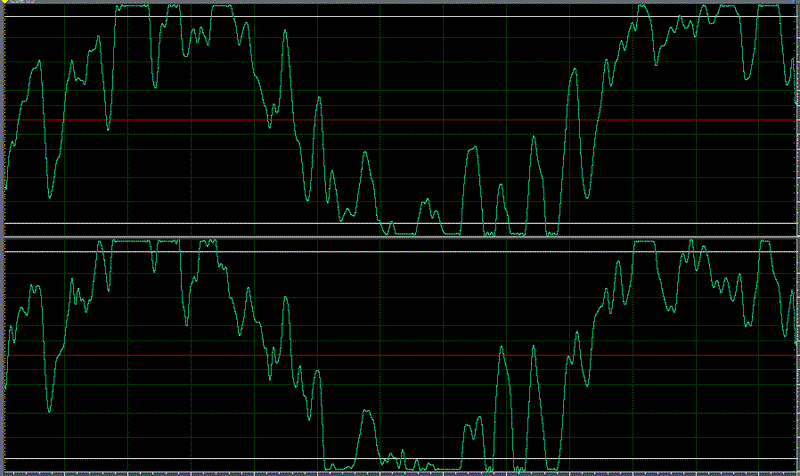
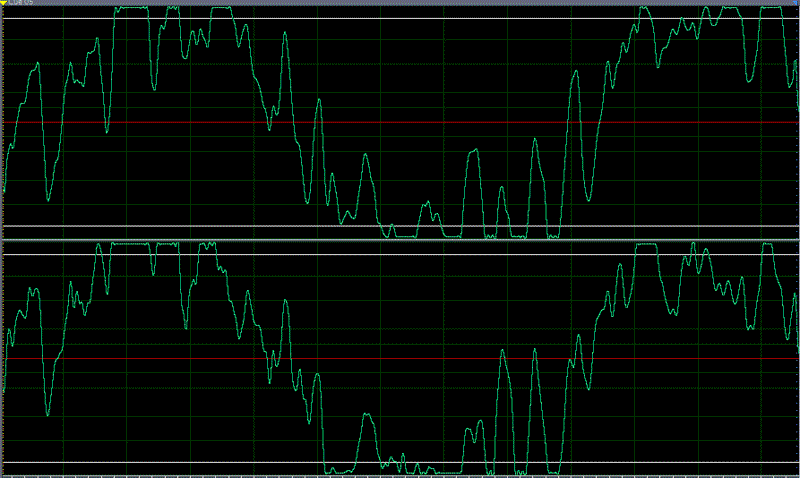
3/4/5 are close-ups of the affected signals.